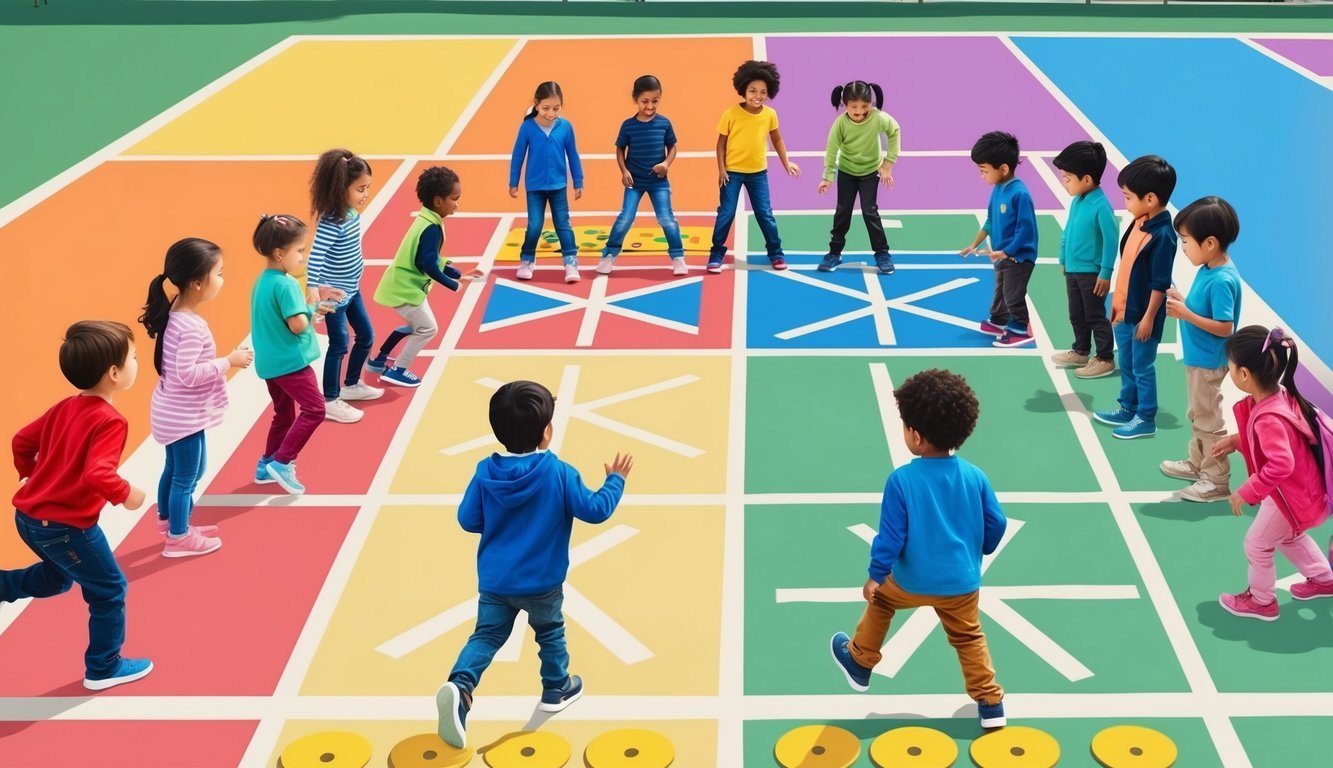Looking for a fun way to keep your kids entertained and learning? Interactive children’s games might be just the ticket.
These digital playtime activities offer a perfect blend of education and entertainment, making screen time both enjoyable and productive for your little ones.
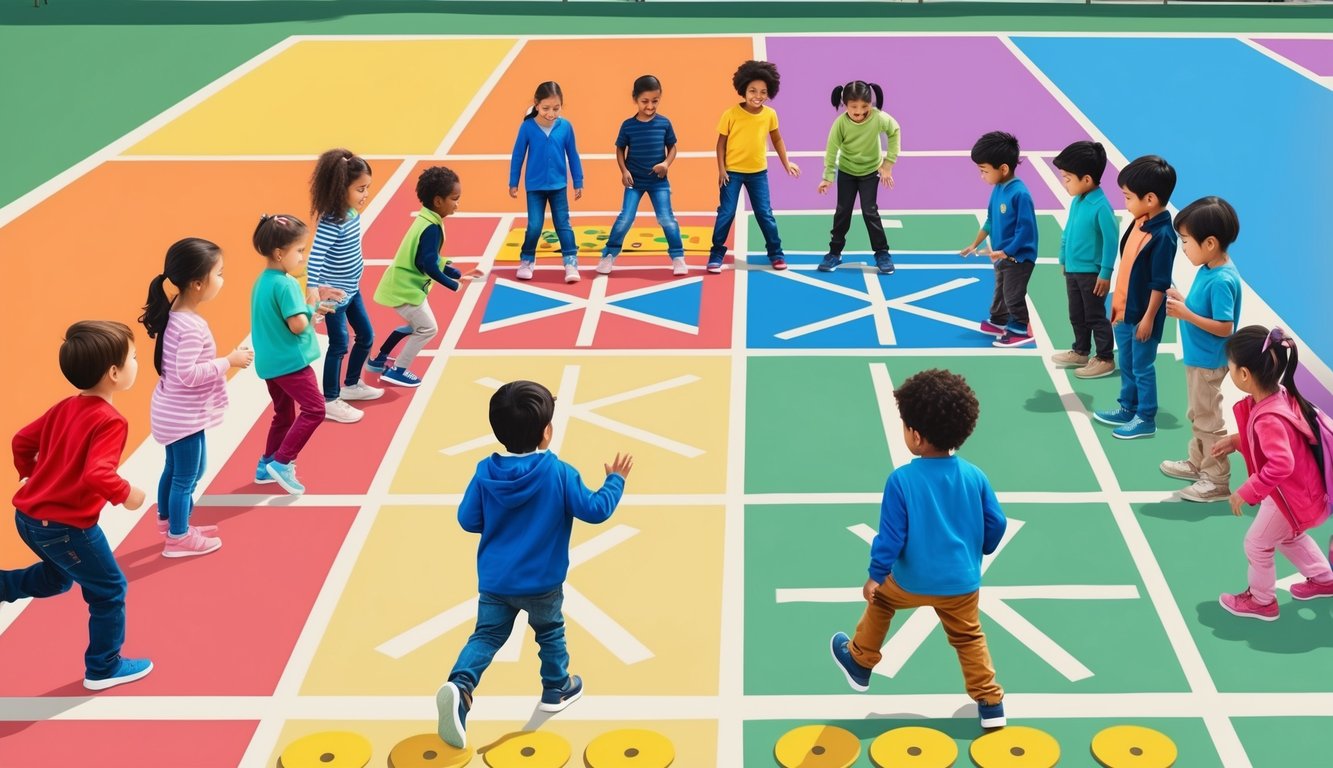
Interactive educational games can help kids develop essential skills while having a blast. From math puzzles to language arts challenges, there’s a wide variety of games designed to support classroom learning and boost academic performance.
You’ll find options for all ages and skill levels, covering subjects like counting, spelling, and even music.
Ready to explore the world of interactive children’s games? PBS KIDS and other educational websites offer a treasure trove of free, engaging games featuring popular characters your kids already know and love.
Whether it’s going on adventures with Wild Kratts or solving puzzles with Daniel Tiger, these games provide a safe, stimulating environment for your children to learn and grow.
Fundamentals of Interactive Children’s Games
Interactive children’s games combine play with learning to engage young minds.
These digital experiences offer unique benefits and come in various types to support different educational goals.
Benefits of Educational Games
Educational games make learning fun and engaging.
You’ll find kids are more motivated to practice skills when it feels like play.
These games often provide immediate feedback, helping children understand concepts faster.
They can boost problem-solving abilities and critical thinking skills too.
Many games adapt to a child’s level, offering just the right challenge.
This personalized approach keeps kids interested and builds confidence.
Plus, educational games can improve hand-eye coordination and digital literacy – important skills in today’s tech-driven world.
Different Types of Learning Games
Math games help kids practice numbers and operations through puzzles and challenges.
You might see games where children count objects or solve equations to progress through levels.
Reading games focus on letter recognition, phonics, and comprehension.
These often include interactive stories where kids choose paths or solve word puzzles.
Science games let children explore natural phenomena through virtual experiments.
You could find games about the solar system, ecosystems, or the human body.
Arts games encourage creativity with digital painting tools or music creation.
These help develop artistic skills and self-expression.
Each type of game targets specific skills, making learning more targeted and enjoyable for kids.
Crafting Educational Experiences
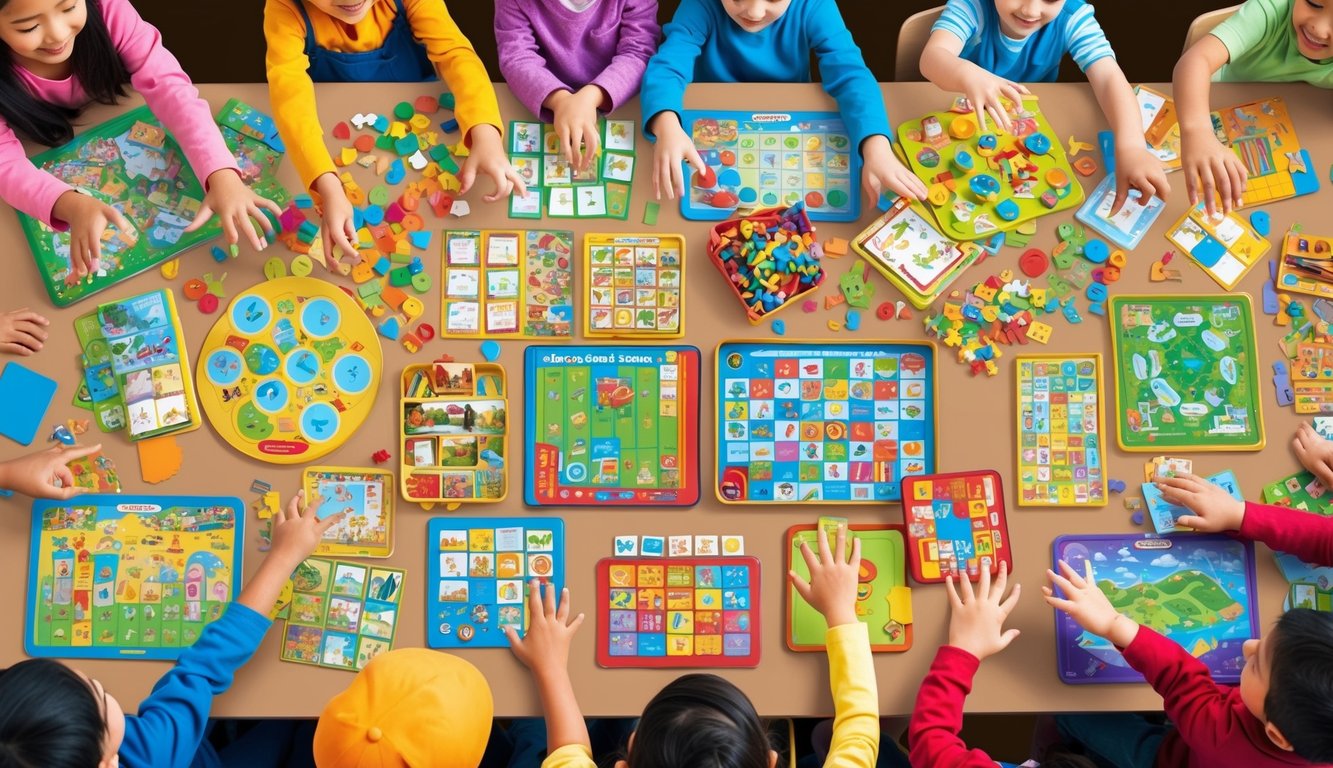
Interactive children’s games offer unique opportunities to blend fun with learning.
By thoughtfully designing game elements, you can create engaging experiences that teach core subjects while keeping kids entertained.
Incorporating Core Subjects
Math becomes a playground when you integrate it into interactive games.
Try creating a digital treasure hunt where kids solve simple equations to unlock clues.
For language arts, design word-building challenges or storytelling games.
You could make a virtual bookshelf where children drag and drop letters to form words, earning points for longer or more complex terms.
Use colorful graphics and playful sound effects to keep young learners excited about these academic tasks.
Remember to adjust difficulty levels based on age groups – what works for a 5-year-old might be too simple for an 8-year-old.
Game Mechanics and Learning
Leverage game mechanics to reinforce learning objectives.
Points systems can motivate kids to tackle more challenging problems.
Progress bars show advancement through lessons, giving a sense of accomplishment.
Introduce time limits carefully – they can add excitement but might stress some children.
Consider using avatars that grow or gain abilities as players master new concepts.
This visual representation of progress can be incredibly motivating.
Implement simple quests or missions that require applying learned skills to solve problems.
Don’t forget collaborative elements.
Multiplayer modes where kids work together on puzzles can teach teamwork while reinforcing academic concepts.
Game Selection and Age Appropriateness
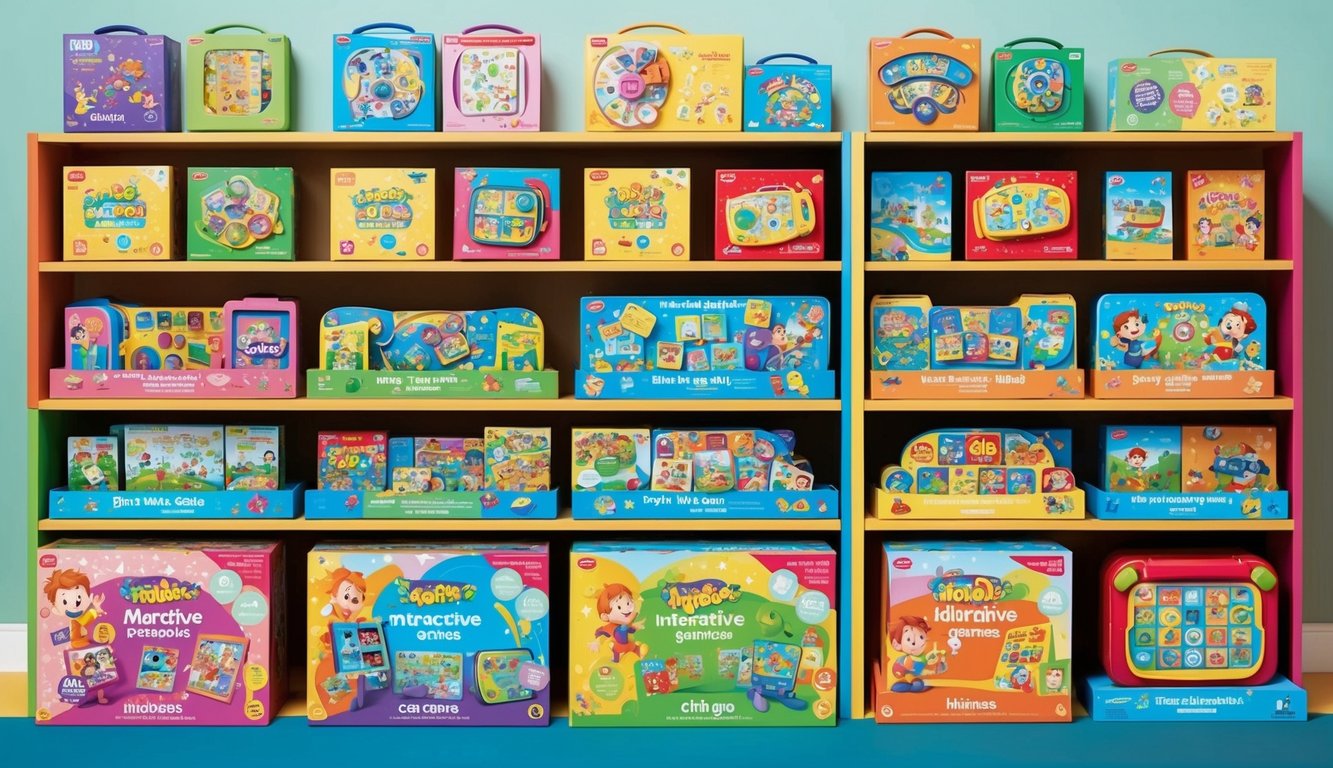
Choosing the right interactive games for children involves considering their developmental stages and tailoring content to specific age groups.
Appropriate game selection supports learning while keeping kids engaged and challenged.
Tailoring Games to Age Groups
For toddlers and preschoolers, focus on simple games that teach basic concepts.
Number recognition games can introduce counting, while letter recognition activities lay the foundation for reading.
Look for colorful, interactive apps with large buttons and clear audio instructions.
Games for early elementary kids can incorporate more complex skills.
Addition and multiplication games make math fun, while word-building puzzles enhance vocabulary.
Choose titles that offer increasing difficulty levels to match your child’s growing abilities.
Older children benefit from strategy games and more in-depth educational content.
Look for titles that blend entertainment with subjects like history, science, or creative problem-solving.
These games often allow for multiplayer modes, encouraging social interaction.
Understanding Developmental Stages
At ages 2-4, children learn through exploration and repetition.
Pick games with simple cause-and-effect actions that reinforce basic skills.
Touch-based interfaces work well for this age group.
For 5-8 year olds, games can introduce more complex concepts.
Look for titles that encourage critical thinking and offer rewards for completing challenges.
This age group can handle longer play sessions and more detailed instructions.
Kids 9 and up can engage with games that require planning and strategic thinking.
Multiplayer options become more important as social learning takes center stage.
Balance educational content with entertainment to keep older children motivated.
Cognitive Skills and Math Games
Math games offer a fun way to boost kids’ problem-solving abilities and numerical skills.
They turn abstract concepts into hands-on learning experiences that engage young minds.
Fostering Problem-Solving Abilities
Puzzle-based math games challenge kids to think critically and find creative solutions.
You can use tangrams to help your child explore geometry and spatial reasoning.
These colorful shape puzzles encourage experimentation and logical thinking.
For number skills, try a game of “Math Bingo.” Create bingo cards with simple equations and call out the answers.
Your child must find the matching problem on their card.
This reinforces addition, subtraction, and quick mental math.
Pattern recognition games like Sudoku (with numbers or shapes for younger kids) develop deductive reasoning.
Start with easier 4×4 grids and work up to more complex puzzles as your child’s skills grow.
Teaching Math Through Play
Board games are excellent tools for sneaking math practice into family fun time.
Monopoly Junior introduces money concepts and basic addition.
Yahtzee helps with counting, multiplication, and probability.
For younger kids, try “Counting Caterpillar.” Use clothespins as caterpillar segments and have your child clip the right number to match dots on leaf cards.
This hands-on activity builds number sense and fine motor skills.
Measurement becomes a game when you set up a pretend bakery.
Let your child “sell” play dough cookies by weight or length.
This practical application of math concepts makes learning stick.
To practice division, play “Fair Share.” Divide a pile of objects (like buttons or pebbles) equally among stuffed animals or family members.
It’s a concrete way to understand this tricky concept.
Language Skills and Reading Games
Interactive games offer engaging ways for children to develop crucial language and reading abilities.
These digital tools make learning fun while building essential skills.
Enhancing Reading With Interactive Games
Reading games help kids master fundamental skills like phonics, sight words, and comprehension.
ABC games teach letter recognition and sounds.
Phonics games reinforce sound-letter relationships, helping you decode unfamiliar words.
Sight word games improve quick recognition of common words.
Rhyming games boost phonological awareness.
Many games adapt to your child’s level, providing just the right challenge.
Try timed reading games to improve fluency.
Look for games with colorful graphics and audio support to keep young learners engaged.
Language Games for English Language Arts
ELA games cover a wide range of language skills.
Vocabulary games expand your word knowledge through matching, definition challenges, and context clues.
Sentence-building games help you construct proper sentences and avoid fragments.
Spelling games offer practice with common patterns and tricky words.
Grammar games teach parts of speech and punctuation rules.
Many games use stories or adventures to make learning more exciting.
Look for games that offer rewards or track progress to motivate continued play.
Multi-player options can add a fun competitive element.
Games for Exploring Creativity and Arts
Interactive games offer exciting ways for kids to unleash their artistic talents and musical abilities.
You can find a variety of engaging activities that spark imagination and develop creative skills.
Art Games and Aesthetic Development
You’ll love exploring digital painting tools in Tate Paint, where you can create your own masterpieces.
This free game lets you experiment with colors, shapes, and textures.
Try Crayola Create & Play to design unique rockets and practice tracing.
It’s great for boosting fine motor skills and letter recognition.
SplashLearn offers art games that introduce you to drawing, painting, and crafting.
These activities nurture your imaginative abilities and artistic expression.
You can also check out Toy Theater for elementary-level art projects that build decision-making and problem-solving skills.
Music Games for Rhythmic Skills
PBS KIDS provides fun music games featuring beloved characters like Elmo and Daniel Tiger.
You’ll get to play with rhythms, melodies, and instruments.
These games help develop your sense of timing and pitch.
Try apps that let you create simple tunes or play along with popular songs.
You’ll improve your listening skills and learn about different musical styles.
Some games even teach basic music theory concepts in a playful way.
Look for adventure games with musical puzzles or storytelling elements.
These combine creativity with problem-solving, making learning even more engaging.
Science and Nature Interactions

Interactive games bring the wonders of science and nature to life for kids.
You’ll explore distant galaxies, discover Earth’s diverse ecosystems, and learn about fascinating animals through engaging digital experiences.
Space Exploration Games
Blast off into the cosmos with space-themed games that ignite your curiosity about the universe.
You’ll pilot virtual spacecraft, visit far-off planets, and uncover cosmic mysteries.
These games teach you about celestial bodies, space technology, and the challenges of interstellar travel.
You might build your own space station or solve puzzles to navigate asteroid fields.
Some games let you explore Mars or search for exoplanets.
Others focus on our solar system, teaching you about each planet’s unique features.
Earth and Animal Discovery Games
Dive into Earth’s diverse ecosystems and meet incredible creatures in nature-focused games.
You’ll trek through rainforests, dive into oceans, and traverse deserts.
These games teach you about animal behaviors, habitats, and the delicate balance of ecosystems.
You might run a virtual wildlife sanctuary or solve environmental challenges.
Dinosaur games are especially popular, letting you excavate fossils and learn about prehistoric life.
Other games focus on current wildlife, teaching you about endangered species and conservation efforts.
Some games challenge you to build and maintain your own ecosystem, showing how different plants and animals interact.
Technology and Interactive Games
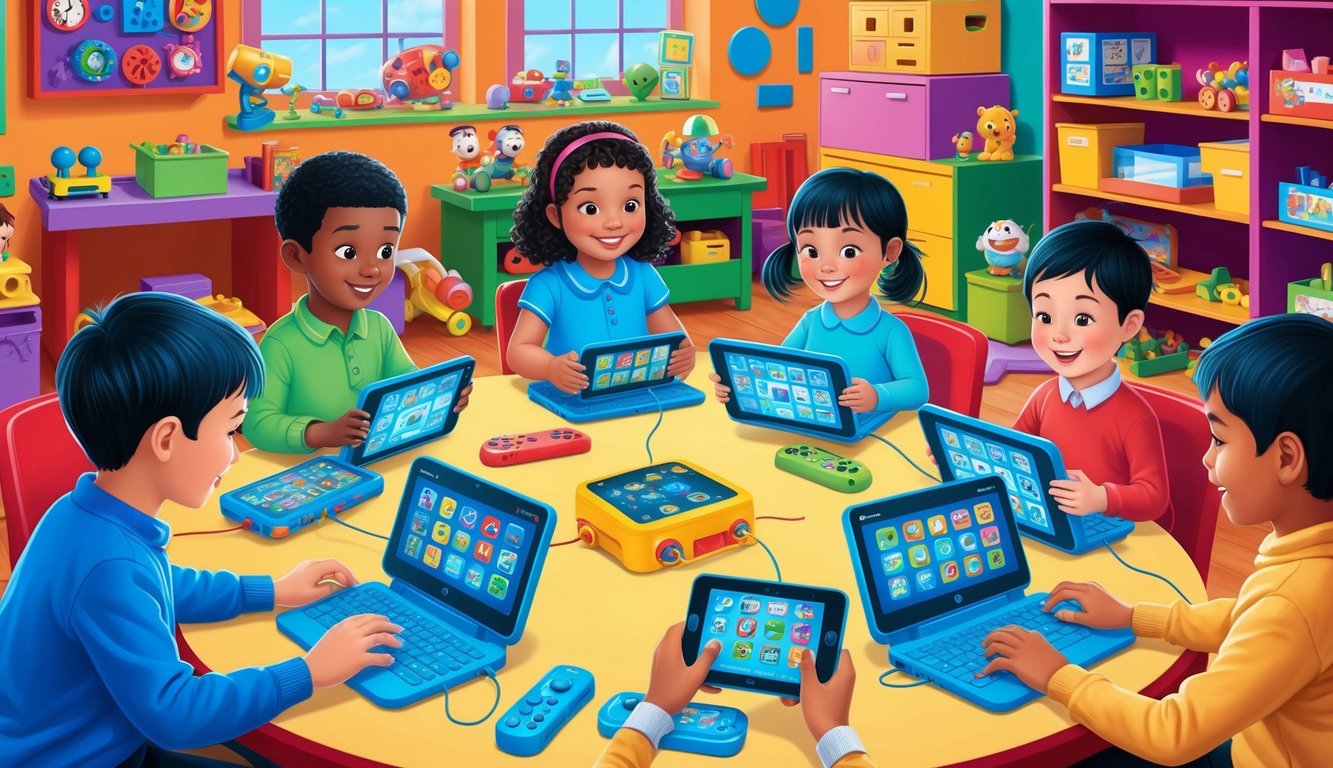
Interactive games are harnessing technology to create immersive learning experiences for children.
Exciting opportunities to explore engineering concepts and boost your digital literacy through gameplay can be found.
Engineering Challenges
Ever dreamed of building your own robot or launching a rocket? Engineering games bring these dreams to life.
Rover Maker lets you design and test Mars rovers, teaching you about space exploration and mechanics.
In Jet’s Bot Builder, you’ll construct robots to complete missions, learning circuitry and programming basics along the way.
These games blend creativity with problem-solving.
You’ll face challenges that require critical thinking and innovative solutions.
As you play, you’re developing skills that real engineers use every day.
Digital Literacy Through Gameplay
Gaming can significantly boost your tech skills.
As you navigate digital environments, you’re learning to use interfaces, follow instructions, and troubleshoot problems.
Many games incorporate coding elements, introducing you to programming concepts in a fun, accessible way.
You might find yourself creating simple scripts or using block-based coding to control characters and solve puzzles.
These experiences help you become more comfortable with technology.
You’re building skills that will serve you well in our increasingly digital world.
Social Studies and Cultural Games
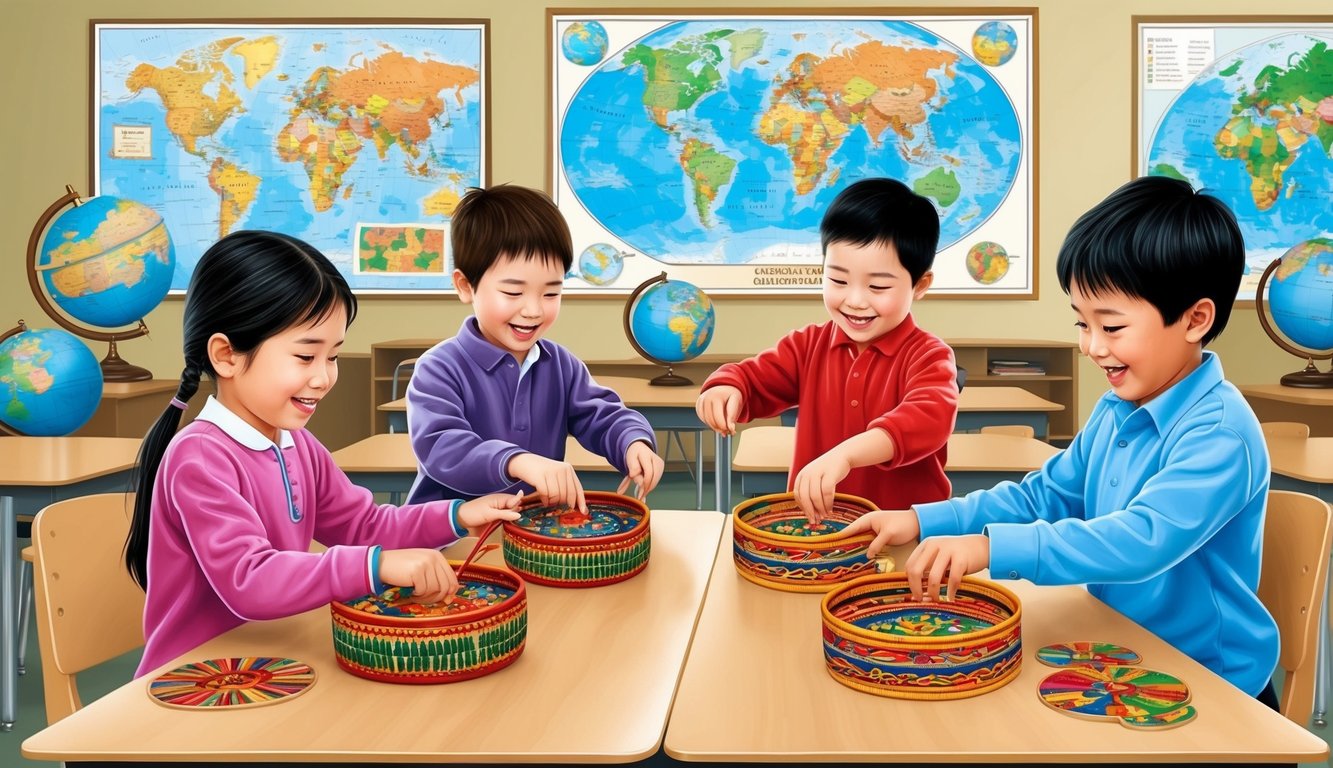
Interactive games can make learning about history and world cultures fun for kids.
These games help bring social studies topics to life through engaging activities and challenges.
Learning History Through Games
Ever wanted to travel back in time? History-themed games let you do just that! Team Hamster! takes you on adventures through different historical periods.
You might help ancient Egyptians build pyramids or join the California Gold Rush.
Some games recreate famous battles or let you run a colonial town.
As you play, you pick up facts about daily life, important events, and key figures from the past.
Peg + Cat often sneaks in math concepts as you solve history-themed puzzles.
Try games that challenge you to put historical events in order on a timeline.
Or test your knowledge with trivia quizzes about presidents, inventions, and world-changing moments.
Global Awareness and Games
Ready to explore the world from your living room? Cultural games open windows into diverse societies.
You might learn to cook dishes from around the globe or dress dolls in traditional outfits from different countries.
Geography games help you memorize capital cities and find countries on a map.
Some let you “visit” famous landmarks like the Eiffel Tower or Great Wall of China.
Language games introduce basic words and phrases in various tongues.
You could also play games focused on world religions, music, or art styles.
These activities boost your cultural literacy and foster understanding of people from all walks of life.
Physical Activity and Health-related Games
Active games boost kids’ fitness and teach healthy habits.
These fun activities get children moving while learning about nutrition and developing coordination skills.
Games for Physical Coordination
Crab Soccer is a hilarious twist on the classic sport.
Kids scuttle around on all fours, kicking the ball while maintaining a crab-like position.
This game strengthens core muscles and improves balance.
For winter fun, try Grover’s Winter Games.
Set up a mini Olympics with activities like skiing, snowboarding, and ice skating.
Use cardboard “skis” or plastic lids as “snowboards” indoors.
These games enhance gross motor skills and spatial awareness.
Create an obstacle course using household items.
Kids can crawl under tables, hop through hula hoops, and balance on a line of tape.
Time each run to add excitement.
This versatile activity boosts agility and body control.
Nutrition and Food Games
Play Food Group Relay to teach healthy eating.
Divide kids into teams and give each a bag of food models.
Players take turns racing to sort foods into the correct food groups.
This game combines physical activity with nutrition education.
Try Fruit and Veggie Tag.
Designate “fruits” as taggers and “veggies” as runners.
When tagged, players must name a fruit or vegetable to rejoin the game.
This encourages quick thinking about healthy foods while getting hearts pumping.
Create a “My Plate” scavenger hunt.
Hide pictures of foods around the room or yard.
Kids search for items to fill a paper plate with balanced food groups.
This active game reinforces healthy meal planning concepts.
Playing Together and Emotional Learning

Interactive games offer kids a fun way to develop social skills and understand emotions.
These activities help children learn to cooperate, express themselves, and manage their feelings in a supportive environment.
Multiplayer Games and Teamwork
Multiplayer games are perfect for teaching kids about teamwork and social interaction.
You can set up puzzle games where everyone needs to contribute to solve a challenge.
This encourages communication and collaboration.
Try “Build Together” where you divide kids into small groups.
Give each group a set of building blocks and a picture of a structure.
They must work as a team to recreate the structure.
Another great option is “Cooperative Board Games” where players work towards a common goal instead of competing against each other.
These games teach kids to support one another and celebrate shared victories.
Remember to rotate roles in team games so each child gets a chance to lead and follow.
This helps develop leadership skills and empathy.
Games that Explore Feelings
Feelings games help kids recognize and express emotions in a safe, playful way.
One fun choice is “Emotion Charades,” where children act out different emotions for others to guess.
You can also create an “Emotion Wheel” with different feelings written on each section.
Spin the wheel and ask kids to share a time they felt that emotion.
This encourages emotional awareness and storytelling.
“Feelings Bingo” is another engaging option.
Make bingo cards with various emotions instead of numbers.
Then, call out scenarios and have kids mark the corresponding feeling on their card.
For younger children, try “Feelings Faces.” Show them pictures of facial expressions and ask them to identify the emotion.
This helps build emotional literacy from an early age.

